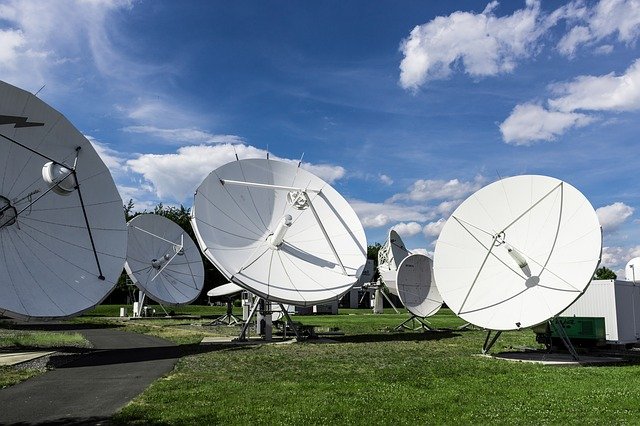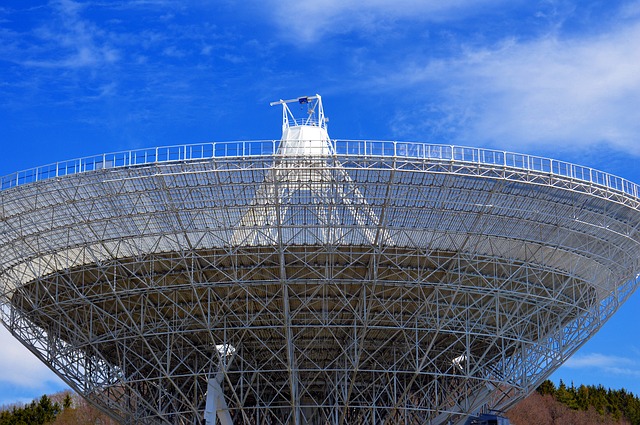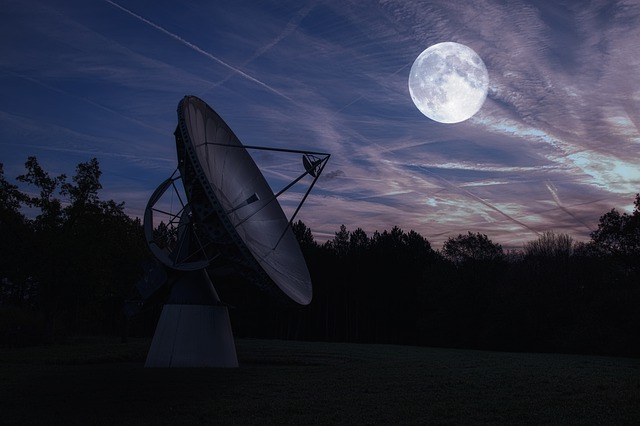*This post may contain affiliate links. This means we may make a commission if you purchase an item using one of our links*
Radio telescopes are a marvel of astronomical technology. They can view things we could never dream of seeing with our own eyes. Their only downfall is how extremely large they tend to be, sometimes spanning multiple miles.
Radio telescopes are so large because the wavelengths they receive, radio waves, are so much larger than the visible wavelengths of light that other optical telescopes receive. The larger the telescope, the more precise the details it receives will be.
How Large Can Radio Telescopes Get?
Table of Contents

There are two types of radio telescopes: single-dish radio telescopes and radio telescope arrays.
Currently, the largest of either telescope type, the Very Large Array, or VLA, is 22 miles across, but there is no limit on how big we could potentially build a radio telescope of either variety in the future.
Single Dish Radio Telescopes
Radio telescopes are enormous constructs, taking up massive amounts of space, but they haven’t always been so large.
In 1937, an astronomer named Grote Reber constructed the first fully functioning radio telescope. Unlike the behemoths of today, it was only 29.5 feet in diameter, but as we came to discover, in the case of radio telescopes, bigger is often better.
As of 2021, the largest single-dish radio satellite is the Five-hundred-meter Aperture Spherical Telescope, also known as FAST or Tianyan, which means “heaven’s eye”.
As the name suggests, FAST is 500 meters (1600 feet) across. It is built in a natural depression in the Earth, making it nearly flush to the surrounding ground.
Radio Telescope Arrays
In 1932, an engineer named Karl Guthe Jansky built the first proto radio telescope array. Jansky’s array had a diameter of 100 feet, which is minuscule to the size of the 22 miles wide Very Large Array that holds the title of the largest telescope array in service.
While the VLA is an impressive feat of engineering, there is more to come in the field of enormous telescope arrays. Currently being built is an array known as SKA, which is short for the Square Kilometer Array.
SKA will be a collection of smaller radio telescopes filling up a 1 square kilometer or 11,000,000 square feet, dwarfing even the Very Large Array.
What Are The Benefits Of It Being So Large?

Because radio telescopes receive radio waves, which are significantly longer than the waves of visible light we can see, they become more accurate the larger they are. While single-dish radio telescopes are precise, they pale compared to the accuracy of radio telescope arrays.
Single dish radio telescopes benefit from being large because the bigger they are, the more information they can receive at any given time.
Radio telescope arrays take advantage of a technique called astronomical interferometry, which means combining the signals from multiple radio telescope antennas so that they simulate a larger radio telescope antenna, in order to achieve greater and more accurate resolution.
With astronomical interferometry, there is more success to be had with larger numbers of small telescopes.
All the telescopes in a radio telescope array are physically connected to one another, and with the VLA, the position of the many telescopes is not static. They can be moved around the area of desert they are located in to form differently shaped arrays for the best readings. Depending on the time of year, different array patterns may be needed.
These readings and images are combined to form one large, incredibly precise image.
When Was The Largest Radio Telescope Built?
The largest single-dish radio telescope, FAST, began construction in 2011 and saw first light in 2016.
The largest radio telescope array, VLA, was approved to be built in 1972 and saw first light in 1980.
SKA, or the Square Kilometer Array, has not begun construction yet but is planned to be finished in 2028.
An honorable mention in the largest radio telescope category is the Arecibo Observatory. Constructed in 1963, the Arecibo Observatory in Puerto Rico was a single-dish radio telescope that was the largest telescope in the world for 53 years until FAST opened in 2016.
Arecibo saw first light on November 1st, 1963, but met a tragic end when it collapsed on December 1st, 2020.
Would It Be Practical If A Radio Telescope Was Smaller?
Smaller radio telescopes have their uses in smaller observatories or places where large dishes or arrays cannot be feasibly built.
Unfortunately for these smaller telescopes, a single small radio telescope will never be as effective as a larger one, but multiple smaller telescopes can be more precise than a single large one if they are used as one unit.
One reason large radio telescopes aren’t always appropriate is the huge radio silence zone that is required to operate one. Radio silence zones require strict monitoring of radio waves, which means things like AM/FM radio, cell phones, and Wi-Fi are forbidden in close proximity to the radio telescope. These rogue radio frequencies can massively affect the sensitive equipment in the radio telescope.
The larger the radio telescope, the larger the radio-quiet zone. So if you’re looking to minimize the size of the radio-quiet zone, a smaller radio telescope can actually be more practical.
As of right now, the technology to make a small radio telescope as effective as a large one does not exist. Luckily, the rising prevalence of radio telescope arrays means that areas that previously couldn’t accommodate the big dish variety of telescopes can explore options for implementing the easier-to-assemble arrays.
Summary
- Radio telescopes are gargantuan in size because the bigger they are, the more accurate their readings.
- FAST, or the Five-hundred-meter Aperture Spherical Telescope, is the large single-dish radio telescope at 1600 feet wide.
- The VLA, or Very Large Array, is the largest radio telescope array, is 22 miles wide.
- When SKA, the Square Kilometer Array, is finished, it will occupy 11,000,000 square feet of space, making it the biggest radio telescope in history.
- Bigger is usually better when it comes to radio telescopes, but factors like accessibility and the size of the radio-quiet zone can sometimes make a smaller radio telescope more practical.
References
https://lco.global/spacebook/telescopes/radio-telescopes/#:~:text=Radio telescopes have to be,the wavelengths of visible light.&text=The larger the telescope, the,observed in a given wavelength.


